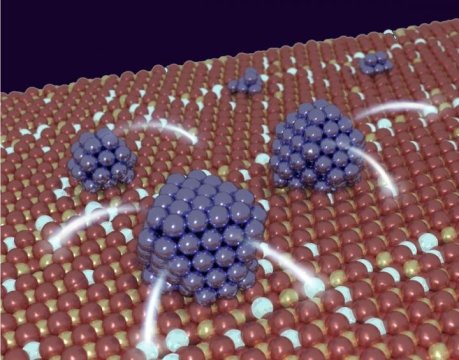
A detailed account has been provided by researchers of how to control the electron charge of nanoparticles of platinum, an important catalyst in fuel cells, to maximize the efficiency of the process.
Among the features that determine the catalytic efficiency of a nanoparticle is its electrical charge, which is difficult to quantify in technologically relevant systems, where the particles interact with the surfaces of other materials. For these catalysts, there is no well-defined quantification. The new study has finally filled this gap. "By combining experimental measurements and theoretical numerical simulations, we established guidelines for controlling the charge of nanoparticles and obtaining catalysts having maximum efficiency," explains Stefano Fabris (CNR-IOM/SISSA), one of the study authors. "The experimental measurements were carried out by researchers from the University of Prague at ELETTRA Sincrotrone Trieste, whereas the simulations were the result of my collaboration with the University of Barcelona."
Fuel cell for "green" methanol
The type of catalyst studied by Fabris and co-workers is important in fuel cells, that is, devices that convert chemical energy into electricity (by means of a reaction between a fuel, hydrogen or another fuel, and oxygen).
"An important line of research in the area of renewable energy is currently investigating the production of methanol using technologies that mimic photosynthesis," explains Fabris. "Should we succeed in producing methanol on an industrial scale using these technologies, then we would also need an efficient and clean way of converting it into electrical energy."
For this reason methanol fuel cells will be used, where the combination of methanol and oxygen produces water and carbon dioxide as a waste product (note that the carbon footprint in this case is neutral in that the methanol will be produced by photosynthesis, removing CO2 from the atmosphere). "The type of catalyst we are studying is the one that will be needed in these fuel cells." The study was in fact funded by the European project ChipCAT, which aims at finding novel materials for the next generation of fuel cells.

 Previous page
Previous page Back to top
Back to top







